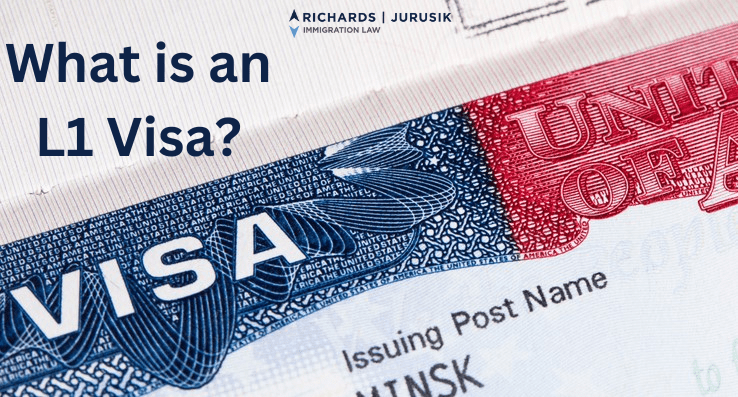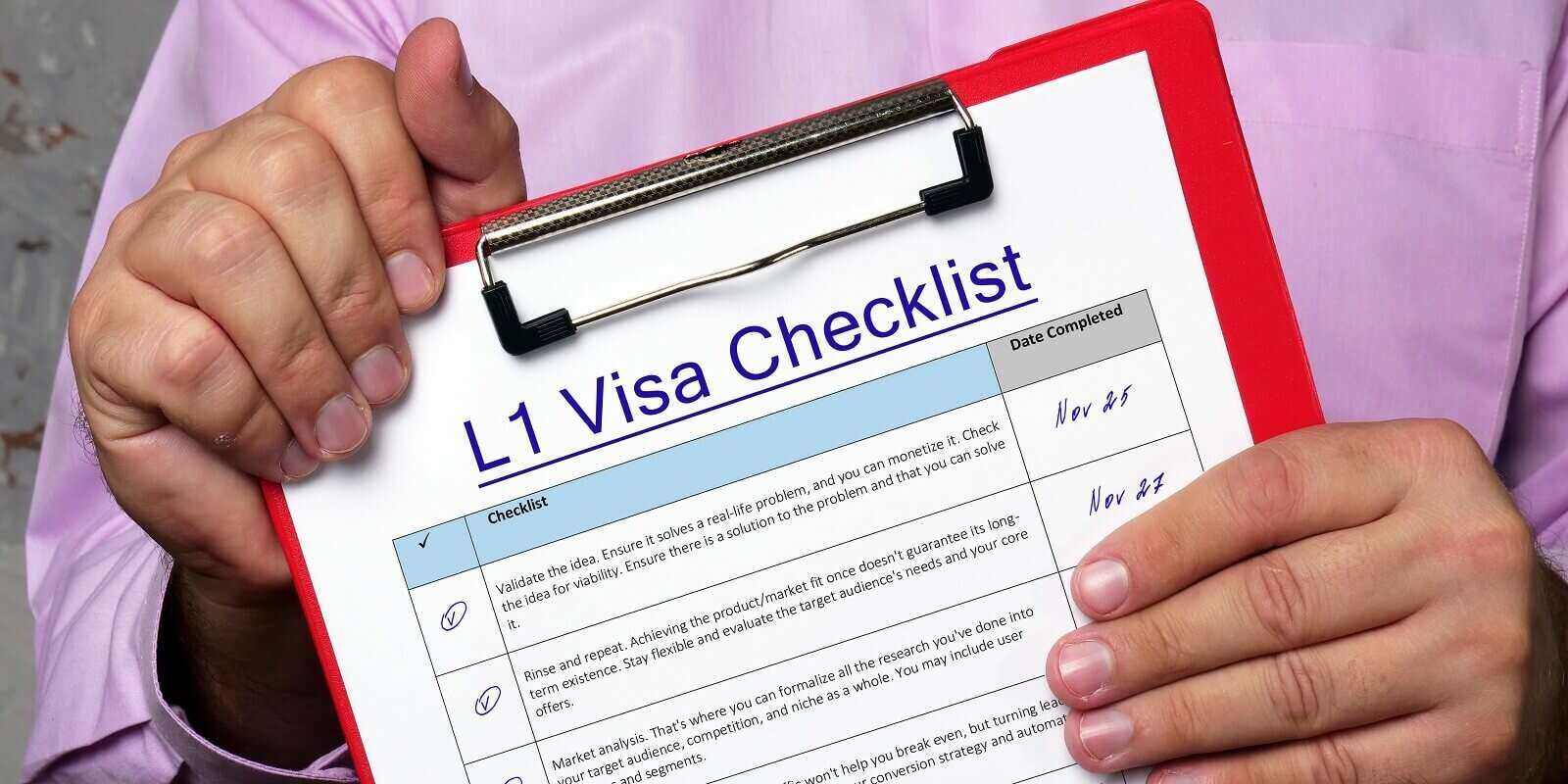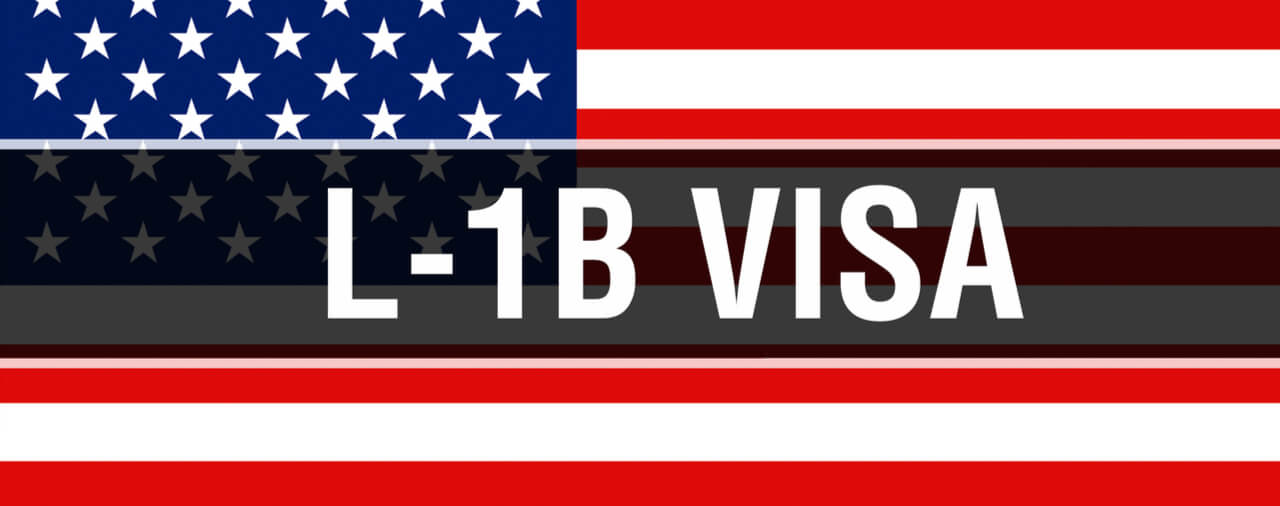Opening Opportunities: A Comprehensive Guide to the L1 Visa Process
The L1 visa process presents an important pathway for international companies seeking to transfer vital workers throughout boundaries. Comprehending the subtleties of qualification requirements, the distinctions between L-1A and L-1B visas, and the ins and outs of the application procedure can significantly influence an applicant's success. Steering this complex landscape is not without its difficulties, and cautious attention to paperwork and company sponsorship is important. As we check out the key components of this process, the methods for getting over possible obstacles will end up being noticeable, disclosing just how notified prep work can open a globe of opportunities.
Understanding the L1 Visa
Comprehending the L1 visa involves identifying its significance as a vital device for international firms looking for to move proficient workers between international offices. This non-immigrant visa category helps with the activity of executives, supervisors, and specialized expertise employees to the USA, thereby allowing companies to preserve functional connection and harness worldwide ability effectively. The L1 visa is separated into 2 key classifications: L-1A for managers and executives, and L-1B for employees having specialized knowledge.The L1 visa offers an essential duty in boosting a company's one-upmanship in the global marketplace - L1 Visa. By allowing firms to move their key workers, businesses can assure that vital projects are handled by certified people who are currently familiar with the business's culture and functional procedures. This internal transfer mechanism not just fosters knowledge sharing however also advertises innovation and cooperation across borders.Moreover, the L1 visa is commonly favored for its reasonably simple application process contrasted to other visa categories, as it enables twin intent, allowing holders to seek irreversible residency while on a temporary copyright. This function makes the L1 visa specifically appealing for both employers and staff members, as it improves the pathway for proficient professionals to establish long-lasting residency in the United States
Qualification Standards
Eligibility for the L1 visa rests on numerous essential requirements that ensure both the worker and the employer meet details certifications. This non-immigrant visa is made for multinational business to transfer employees from international offices to U.S. counterparts.Firstly, the company must be a certifying organization, that includes a parent company, branch, affiliate, or subsidiary of an U.S. service. The business should have been doing service for at the very least one year both in the U.S. and abroad. This ensures that the business has enough operational stability and a reputable presence.Secondly, the worker has to hold a managerial, executive, or specialized expertise placement. For L1A visas, the applicant must demonstrate managerial or executive credentials, while L1B visas concentrate on specialized knowledge pertaining to the company's items, solutions, or processes. Furthermore, the staff member has to have helped the foreign entity for a minimum of one continual year within the last 3 years prior to their application.Lastly, the worker's role in the united state should align with their previous position, guaranteeing that their skills and expertise are leveraged for the business's benefit.
Kinds of L1 Visas
The L1 visa category makes up two main types made to facilitate the transfer of staff members within multinational business: the L1A visa for managers and executives, and the L1B visa for staff members with specialized expertise. Each kind offers unique purposes and has details eligibility criteria.The L1A visa is tailored for individuals that hold managerial or executive positions within a business. This visa allows top-level staff members to transfer to an U.S. branch, subsidiary, or associate of the very same company. Applicants for the L1A visa must show that they have actually been utilized in a managerial or executive capacity for at the very least one constant year within the previous three years prior to their application. Additionally, this visa supplies a much longer period of keep, initially approved for 3 years, with the possibility of expansions for approximately 7 years.In comparison, the L1B visa is meant for specialists with specialized knowledge relevant to the company's products, services, or processes. To qualify, applicants need to confirm that their competence is vital to the organization and that they have actually functioned for at least one continuous year within the last 3 years in a duty that needed this specialized understanding. The L1B visa is initially given for 3 years, with expansions readily available for as much as 5 years.Both visa kinds are necessary for business seeking to boost their worldwide procedures by leveraging experienced workers, thus promoting technology and efficiency within the U.S. market.
Application Process
Steering via the L1 copyright procedure entails several crucial actions that should be carefully complied with to ensure a successful outcome. The process begins with the united state company, who have to initially develop eligibility by showing a certifying connection with the international entity and verifying that the staff member meets the specific demands for the L1 visa category being sought.Once eligibility is confirmed, the employer initiates the process by submitting Kind I-129, the Application for a Nonimmigrant Worker, with the U.S. Citizenship and Immigration Services (USCIS) This kind must be accompanied by a detailed summary of the job tasks to be done, the organizational structure of both the united state and foreign entities, and the worker's certifications. It's crucial to verify that all details is exact and total, as noninclusions or inaccuracies can lead to delays or denials.Upon authorization of the I-129 application, the next step entails the worker requesting the L1 visa at an U.S. embassy or consular office in their home nation. This phase needs the conclusion of Kind DS-160, the Online Nonimmigrant copyright, and arranging an interview. Throughout the meeting, the candidate has to provide evidence supporting their qualifications and the employer's petition.After the visa is granted, the employee can enter the USA to operate in the marked role. Generally, careful prep work and adherence per step of the application process are important for a successful L1 visa end result.
Required Paperwork

Essential Types Required
Steering the L1 Visa process calls for mindful focus to the crucial types and documentation essential for a successful application. The main kind required is the Kind I-129, Application for a Nonimmigrant Worker, which have to be completed and submitted by the united state employer. This kind describes the details of the employment deal and the certifications of the employee seeking the L1 Visa.Alongside Type I-129, the applicant will require to total Type I-539 if going along with relative are also getting visas. Furthermore, the employer must provide proof of the certifying relationship in between the U.S. entity and the international entity, commonly requiring the submission of corporate documents such as articles of unification or monetary statements.Moreover, it is vital to consist of the L Category Supplement to Type I-129, which specifies the sort of L Visa being requested-- either L-1A for managers and executives or L-1B for staff members with specialized expertise. Lastly, applicants should assure that all kinds are authorized and dated properly, as insufficient submissions can bring about delays or denials. Properly putting together these essential types lays the structure for a smoother L1 copyright process.

Sustaining Evidence Requirements
Sustaining documentation is essential for a successful L1 copyright, as it validates the insurance claims made in the application. Applicants have to give a series of papers to show eligibility for the visa, which is categorized right into 2 key kinds: evidence of the qualifying connection between the U.S. and foreign entities and proof of the candidate's qualifications.To develop the partnership, candidates need to send documentation such as business business graphes, financial declarations, and evidence of ownership. These records verify that the international company has a qualifying relationship with the united state employer, whether as a parent firm, subsidiary, branch, or affiliate.For the applicant's certifications, essential documents include an in-depth work letter from the foreign company, outlining the candidate's work title, obligations, and period of employment. In addition, educational credentials, such as levels and diplomas, need to be supplied to verify the applicant's proficiency in the appropriate area.
Employer Sponsorship Records

Usual Challenges
Steering the L1 visa procedure presents a number of typical challenges that candidates must know. Trick concerns typically consist of stringent paperwork requirements, potential delays in handling times, and the necessity for strict legal conformity. Comprehending these challenges can assist applicants much better prepare and reduce dangers throughout their copyright journey.
Paperwork Demands
The L1 copyright procedure usually provides substantial challenges connected to documentation demands. Applicants need to supply considerable documentation to establish qualification, which can bring about complication and possible delays. Key files consist of proof of a certifying relationship between the U.S. and international company, proof of the applicant's employment background, and comprehensive details concerning the job role in the U.S.One usual difficulty is collecting enough evidence to show the nature of the certifying relationship. Firms often struggle to existing clear organizational charts or economic statements that show the connection between the entities. On top of that, guaranteeing that letters of assistance from companies precisely reflect the candidate's task duties and credentials is vital, as vague descriptions can cause denials.Another problem occurs from the demand for comprehensive work descriptions that align with the L1 visa categories. Candidates should express not only their current function but also their managerial or specialized knowledge duties plainly. This requires a detailed understanding of both the candidate's setting and the regulative language used in L1 applications.
Handling Time Delays
Experiencing hold-ups in processing times is a typical difficulty faced by L1 visa candidates, often resulting in irritation and unpredictability. Numerous elements add to these hold-ups, including high application quantities, increased scrutiny of applications, and management backlogs within the united state Citizenship and Migration Provider (USCIS) Applicants might locate that handling times can differ significantly depending upon the service facility handling their application, as each center has its own work and performance degrees. Additionally, the complexity of the candidate's case, such as the need for extensive paperwork or explanation, can even more prolong wait times.In some instances, issues associated with the applicant's existing immigration status or previous visa history may likewise result in extra hold-ups, as USCIS may call for further testimonial or info. It is important for prospects to stay positive during this duration, preserving open communication with their employers and legal agents to resolve any potential concerns promptly.Understanding these processing time difficulties can assist L1 visa applicants get ready for feasible hold-ups and minimize the influence on their shift and job plans. Patience and persistance are vital merits in maneuvering this intricate procedure.
Lawful Conformity Issues
Many L1 visa applicants run into lawful compliance issues that can complicate their trip towards getting the visa. Comprehending and sticking to the particular policies established by the united state Citizenship and Immigration Services (USCIS) is crucial. Common challenges consist of showing the qualifying connection in between the foreign and U.S. companies, along with proving that the applicant possesses the requisite specialized understanding or supervisory capacity.Additionally, applicants must provide thorough paperwork describing their work obligations, business structure, and financial feasibility of the U.S. entity. Inadequate or inaccurate paperwork can cause delays and even rejections. Companies must also guarantee that they abide by labor laws, including wage and functioning condition criteria, which can influence visa eligibility.Another typical issue involves maintaining compliance with the regards to the visa as soon as provided. Modifications in employment condition, work responsibilities, or firm framework can necessitate changes to the visa, which otherwise resolved without delay can result in legal complications. Because of this, remaining educated regarding compliance needs and looking for legal counsel when needed is necessary to navigate the intricacies of the L1 visa procedure successfully.
Tips for Success
Success in the L1 copyright procedure often rests on precise prep work and interest to information. To improve your opportunities of approval, begin by extensively understanding the qualification demands for both the L1A and L1B visa classifications. Assess whether your placement at the company certifies as managerial, executive, or specialized knowledge, as this classification significantly impacts your application.Next, gather considerable documentation that validates your cases. This includes business graphes, comprehensive work descriptions, and proof of the business's operational framework. Clear and concise proof of the qualifying partnership in between the united state entity and the international entity is essential. Verify that all documents are organized rationally and offered in a professional way, as this reflects your commitment and severity about the application.Engage the solutions of a skilled migration lawyer that specializes in L1 visas. Their experience can confirm important, leading you via complex regulations and guaranteeing that all documents adheres to current regulations. Furthermore, plan for the meeting by exercising answers to common concerns and preparing to discuss your duty and contributions to the company in deepness.
Regularly Asked Concerns
Can Family Members Members Go Along With the L1 Visa Holder?
Yes, household members of L1 visa holders, including spouses and unmarried children under 21, can go along with the main visa owner. They may additionally make an application for L2 visas, which allow them to reside in the United States.
For How Long Can I Keep on an L1 Visa?
The L1 visa allows preliminary keeps of as much as three years, with the possibility of expansion. L1A visa holders may remain for an optimum of seven years, while L1B visa holders can remain for 5 years.
Can L1 Visa Holders Look For a Permit?
Yes, L1 visa owners can apply for a permit. L1 Visa. They might pursue long-term residency with employment-based classifications, normally needing sponsorship from their employer, provided they meet the required qualifications and documents requirements
What Happens if My L1 copyright Is Refuted?
If your L1 copyright is rejected, you may get a notification detailing the reasons for rejection. You can look for to appeal the choice, reapply, or check out different visa choices based on your conditions.
Exist Any Type Of Traveling Restrictions With an L1 Visa?
An L1 visa generally allows for international travel; however, re-entry to the united state is contingent upon preserving legitimate condition. Vacationers should ensure compliance with visa conditions to prevent problems upon return
Final thought
